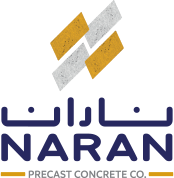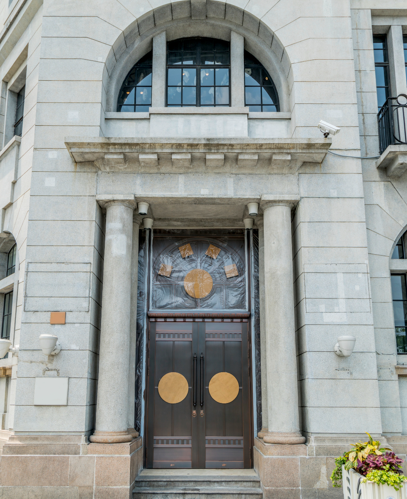When it comes to choosing a material for your building’s façade, you can find several options in the market. The material you pick for this key exterior element of your property directly affects its aesthetics, structural integrity, and long-term value.
This is precisely why you need a material for your façade that gives you a seamless blend of function, style, and performance. Recently, in most building construction projects, the trend has shifted from traditional materials like concrete to other innovative options like GRP and GRC when it comes to facades.
But what exactly are GRP and GRC materials, and which of the two is better for the façade of modern residential and commercial buildings? This is what this blog is all about.
So, if you are not familiar with GRP or GRC materials and you are planning to renovate or build your building’s façade from scratch, keep on reading till the end to make a more informed decision.
- What is GRP?
- Key Features of GRP
- Main Benefits of GRP Facades
- What is GRC?
- Key Features of GRC
- Main Benefits of GRP Facades
- Which One is the Better Option?
What is GRP?
GRP stands for Glass Reinforced Plastic. Also known as fiberglass, this innovative material is made from glass fibers and a polymer resin like polyester, epoxy, or vinyl ester. The combined strength of fibers and the adaptability of polymer make GRP among the best precast building materials for both structural and aesthetic applications.

GRP is a very lightweight material that offers you greater durability, strength, and versatility. This is exactly what makes it a perfect fit for building facades, roofing elements, decorative elements, and cladding panels.
Key Features of GRP
Here are some key features of GRP that make it a perfect material for the façade of your building.
- Very Strong but Lightweight
GRP boasts an exceptional strength-to-weight ratio, which makes it much lighter than traditional precast structural elements. However, despite being lightweight, this material still has enough strength to be used in structural applications for your building’s façade without creating any cracking or damage risks.
Exceptional Corrosion Resistance
GRP is a chemically resistant material that doesn’t corrode even when used in harsh environments. This is why most experts recommend GRP facades in coastal areas and industrial settings where chemical exposure risks are higher.
- Non-Conductive Nature
GRP offers insulation from both heat and electricity. This feature makes them a perfect fit for building facades where you need to maintain high electrical safety and thermal separation.
- High Impact, Weather, and Moisture Resistance
Unlike concrete, which can deteriorate over time, GRP can easily withstand harsh weather, high impact, and constant moisture exposure without becoming weaker or cracked. This is why using GRP for facades in areas where the sun shines too brightly or where the weather fluctuates between extremes often is a great idea.
Greater Aesthetics
GRP facades can be designed with a wide range of finishes to complement your main property and the surroundings. You can paint them, apply gel coats, or embed different textures to meet your very specific aesthetic needs.
Main Benefits of GRP Facades
Here is why choosing GRP material for your façade is a great idea.
- This material gives you greater design flexibility, where you can use 3D geometries and freeform designs to make the façade appear more dynamic.
- GRP facades are very quick and easy to install due to their lightweight construct.
- Quick installation and lightweight build also lead to fewer labor and overall project costs if you pick GRP for the façade of your building.
- GRP is a low-maintenance material due to its high impact, rust, rot, and chemical resistance.
- GRP facades can last for decades without degradation, even in demanding conditions.
- You can use GRP for cladding over existing structures with ease. This adaptability results from this material’s low weight and thin profile.

What is GRC?
GRC or glass-reinforced concrete is another innovative composite material that is made from the combination of water, cement, fine aggregates, and alkali-resistant glass fibers.
The combined tensile strength of the fibers and compressive strength of the cementitious mixture in GRC gives it unparalleled durability and versatility, which is not found in GRP or traditional precast concrete.
GRC has become the top building façade material in applications where greater structural strength, natural stone or concrete finishes, and fire resistance are needed.
Key Features of GRC
The following are some notable features of GRC that set it apart.
- High Strength to Weight Ratio
Just like GRP, facades made from GRC also possess a much greater strength-to-weight ratio. GRC weighs less than regular concrete but more than GRP, which makes it perfect for making durable façade structures.
- Durability
Due to being heavier than GRP, GRC facades are more resistant to wear and tear and impacts. This is why you can go for GRC facades if they are to be used long-term in harsh environmental conditions.
- Fire Resistance
Unlike polymer-based GRP facades that are prone to fire damage, GRC gives you greater combustion resistance. In fact, GRC doesn’t burn or melt even under high heat, which makes it ideal as a façade material for high-rise commercial and residential buildings.
- Thin Section Capabilities
GRC elements can be manufactured in very thin and lightweight sections. These can even come in 10-15mm width without sacrificing strength, which allows you to use them as façade decorative elements as well.
- Eco-Friendly
To make GRC, you can use recycled aggregates and industrial by-products in the mix, which makes it an eco-friendlier option than GRP. Moreover, since this material can last you a lifetime, it further reduces the overall environmental impact.
Main Benefits of GRC Facades
Here is what makes GRC facades a better investment for your project.
- This material can be used to make both modern and traditional facades for heritage restoration projects.
- Compared to precast concrete, GRC is about 75% lighter, which leads to easy installation, lower material costs, and lower labor costs.
- These facades can last you for decades with minimal to no degradation.
- Due to their fire-resistant nature, GRC facades can be used in schools, hospitals, and high-rise developments.
- GRC facades give you both more functionality and aesthetic flexibility.

Which One is the Better Option?
When choosing between GRC and GRP facades, you need to look at your specific project needs. For cost-effective, quickly installed, and more aesthetically pleasing facades, experts recommended using GRP material.
This material can also be used for facades where you have to deal with complex, freeform geometries and retrofit or modular construction. GRP-based facades are a perfect choice in applications where you need them to function as non-load-bearing decorative elements.
GRC facades are more effective for use in rugged environments and high-traffic zones. These are used in projects where sustainability and longevity are the major priorities. You can also pick this material for your façade if you wish to create aesthetics that mimic stone, concrete, or classical ornamentation.
You can also use a combination of GRP and GRC for the façade of your building. GRP can be employed in non-critical parts of the façade for decorative purposes, while GRC can be integrated into structurally integral components. This blend gives you optimal performance and the freedom to explore different aesthetics at the same time.
Conclusion
Modern facades are not just about how they look, but also about how they perform, connect with the surroundings, and the durability they offer. GRP and GRC-based facades are gaining popularity due to being cost-effective, more functional, and highly sturdy.
However, both of these materials differ in terms of their strength, intended purpose, and appearance. This is why you need to carefully consider your project requirements before making this decision.
This can help you select a material that not only delivers the best aesthetics but also gives you the highest value for your money when it comes to the strength, durability, and functionality of your building’s façade.
You can visit us at Naran Precast Concrete Co. to get the best precast concrete and GRP building solutions for all residential and commercial projects in the UAE.

